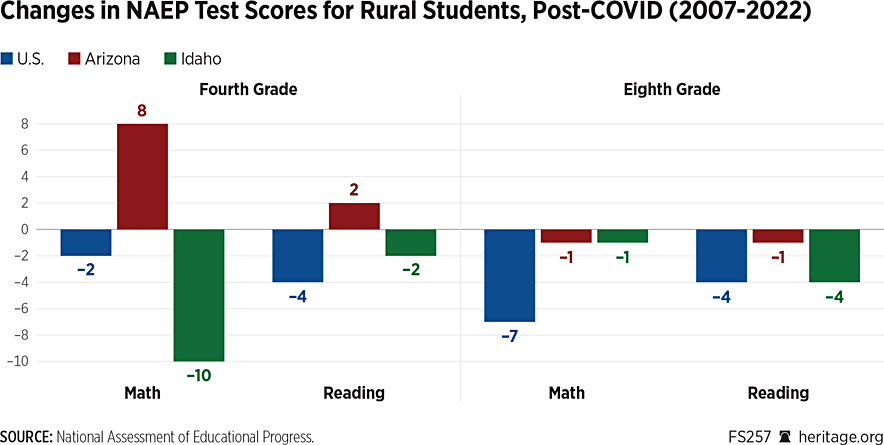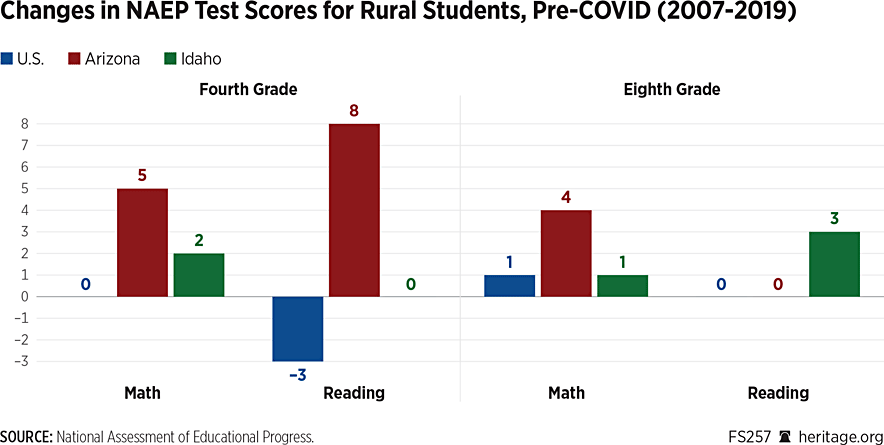The Issue
Nationwide, states have been rapidly adopting education choice policies that empower parents to choose the learning environments that align with their values and work best for their children. Idaho, however, is being left behind. One major obstacle has been the claim by opponents of education choice in Idaho that giving families more education options via education choice policies would harm or even destroy rural district schools. These concerns, even if understandable, are not based on evidence. Arizona’s school choice program shows that both rural students and teachers have a great deal to gain from education choice.
Idaho Schools in Decline
Even before COVID-19, educational progress in Idaho’s rural education system was mediocre. Since the pandemic began, the scores of rural Idaho students on the National Assessment of Educational Progress (NAEP) have declined. Most troubling is the 10-point decline in performance of rural Idaho students in fourth-grade math, which is the equivalent of one grade level. Meanwhile, fourth-grade students in rural Arizona gained eight points in math over the same time period.

Public Support
In Idaho, there is widespread support for education choice statewide. A Morning Consult poll found in 2023 that 69 percent of Idaho citizens, and 75 percent of Idaho parents of school-aged children, support an education savings account policy that would provide parents with public funding for a wide variety of educational expenses.
Arizona as a Model for Rural School Choice
As fast-growing states with vast rural areas, Arizona and Idaho share many similarities. Arizona can therefore provide Idaho with a road map of how to revitalize K–12 education through education choice. The same force that drives Idaho’s economic success—healthy competition—is driving educational entrepreneurship and academic improvement in Arizona. While rural progress on the NAEP has been mediocre over the past 15 years, K–12 students in rural Arizona have significantly improved their academic performance.
The pre-pandemic NAEP figures are revealing. From 2007 to 2019, rural students in Arizona showed an astonishing increase in performance on the fourth-grade and eighth-grade math and reading tests—a combined 17-point increase. Meanwhile, NAEP scores for rural students in Idaho grew by a combined six points as rural scores nationwide declined by two points.

Conclusion
Rural Idaho students, teachers and communities deserve an education system that will help to improve their lives and their futures. The current one-size-fits-all education system does not work in these rural communities, or anywhere else, causing academic performance to stagnate and even decline. As the data from Arizona show, far from harming schools in rural areas, education flourished in rural areas in a robust choice environment. Not only did Arizona’s rural schools not crumble, they diversified their offerings, and their academic performance grew stronger over time.




